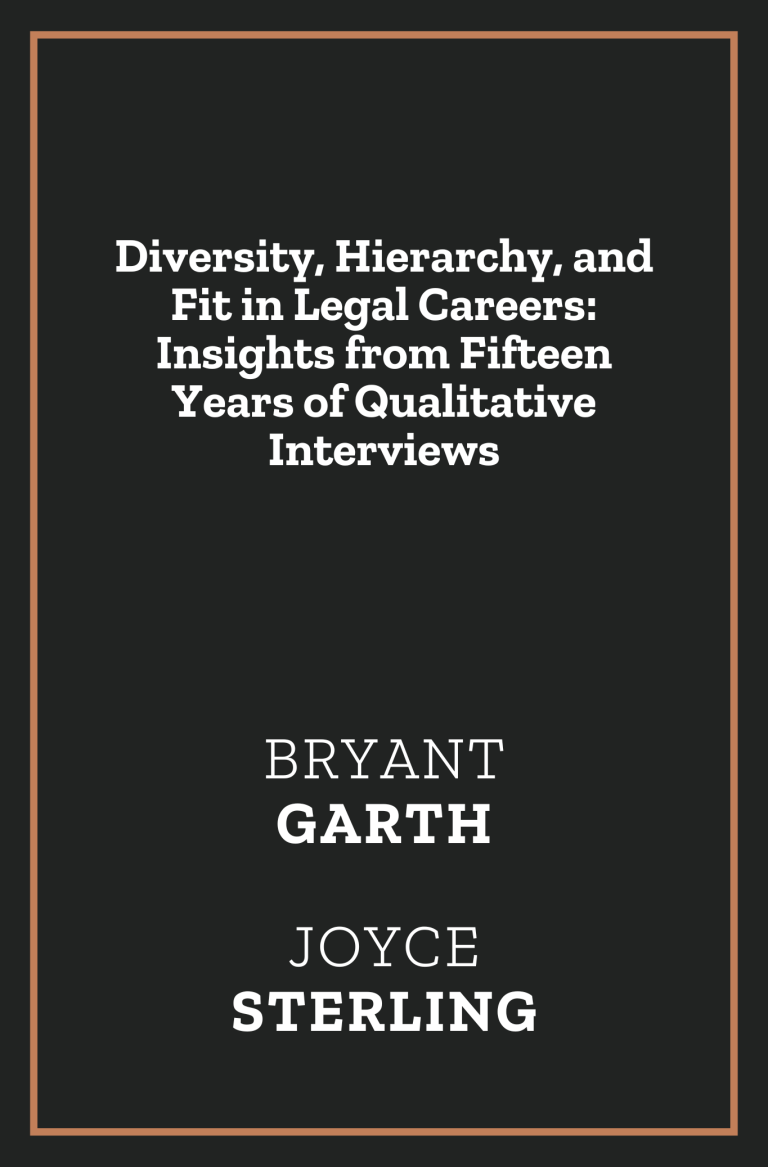From the Georgetown Journal of Legal Ethics
This article focuses on change and continuity in how the legal profession provides opportunity for women and minorities. It begins by discussing a provocative photograph of “diverse” “elite lawyers” on the golf course as a symbol of the requirement to “fit” in the work settings of the legal profession. It is the first article based on three waves of qualitative interviews of an “After the J.D.” longitudinal study of lawyers’ careers. This article uses that unique resource to examine the evolving role of race, gender, and ethnicity in lawyers’ careers. The article addresses theoretical perspectives on advantage and disadvantage, contrasting our “capital assets” approach with a variety of other legal and sociological approaches. It then presents the qualitative interviews beginning with the elite track of large law firms, which we term “On-Broadway” to connote the most established and high prestige route. The article next studies similar issues in medium-size firms and variations of Big Law careers—of counsel and in-house in particular—concluding with examples of how people build “Off-Broadway” careers that draw upon diversity and find ways to capitalize on it. The concluding part draws the qualitative interviews together in a general conclusion, demonstrating how the capital asset approach is enacted in the interviews through the concept of “fit.” Fit is a way for embedded histories and power relationships to make it more difficult for minorities, women, and people who do not possess the cultural capital represented by golf, for example, to succeed in particular settings—including the corporate law firm.

